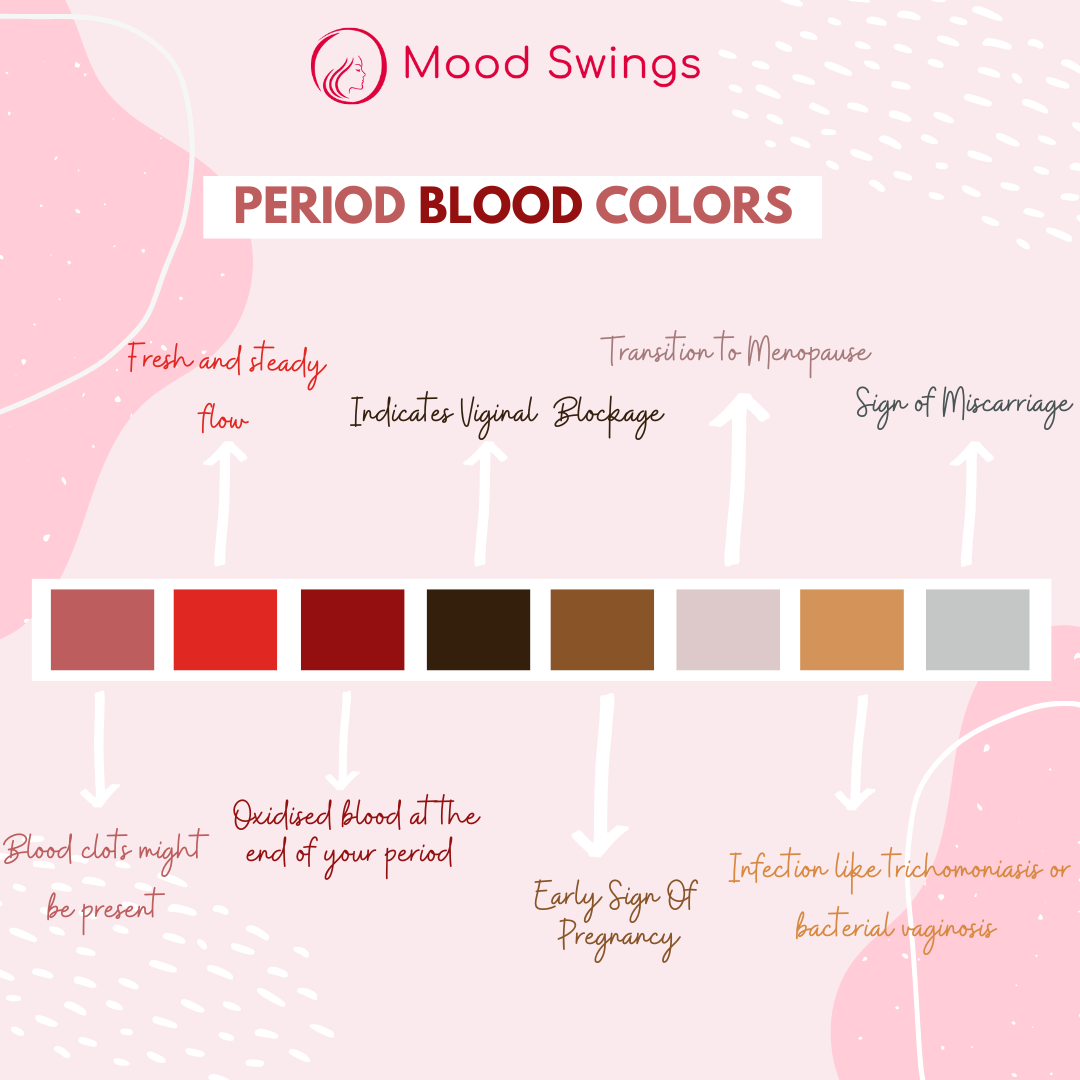Periods, also known as menstrual cycles, are a normal part of reproductive health for people who have female reproductive organs. Menstruation typically occurs once a month and involves the shedding of the uterine lining, accompanied by vaginal bleeding. While periods are a natural bodily function, many people don’t fully understand the different colors of period blood and what they mean. In this blog post, we will discuss the various colors of period blood, what causes those colors, and how the Mood Swings period tracking app can help people better understand their menstrual cycles.
What Are The Different Colors Of Period Blood?
The color of menstrual blood can vary depending on factors such as the person’s age, hormone levels, and overall health. The most common colors of period blood are:
- Bright Red: Bright red period blood is typically a sign that the blood is fresh and has not been in the uterus for very long. This color of blood is often seen at the beginning of a menstrual cycle.
- Dark Red: Dark red period blood is typically a sign that the blood has been in the uterus for longer. This color of blood is often seen toward the end of a menstrual cycle.
- Brown: Brown period blood is often seen at the beginning or end of a menstrual cycle. This color of blood is typically a sign that the blood has been in the uterus for a longer time and has had time to oxidize, which causes it to turn brown.
- Pink: Pink period blood is often seen in small amounts during a menstrual cycle. This color of blood is typically a sign that the blood is mixed with cervical mucus, which can give it a pinkish tint.
- Orange: Orange period blood is a less common color of menstrual blood. This color of blood can be a sign of infection, so it is important to speak with a healthcare provider if you experience this color of period blood.
- Gray: Gray period blood is a rare color of menstrual blood. This color of blood can be a sign of infection or miscarriage, so it is important to speak with a healthcare provider if you experience this color of period blood.
What Causes The Different Colors Of Period Blood?
The color of menstrual blood can be influenced by a variety of factors, including:
- Hormone Levels: Hormone levels can affect the thickness and texture of the uterine lining, which can impact the color of menstrual blood.
- Age: As people age, their hormone levels can change, impacting the color of menstrual blood.
- Health Conditions: Certain health conditions, such as polycystic ovary syndrome (PCOS) or endometriosis, can impact the color of menstrual blood.
- Medications: Certain medications, such as hormonal birth control or blood thinners, can impact the color of menstrual blood.
How Can Mood Swings Period Tracking App Help Females Better Understand Their Menstrual Cycles?
Period tracking apps are a useful tool for menstruating because they allow users to track the length of their menstrual cycles, their periods’ start and end dates, and any symptoms or changes in their menstrual cycle. By tracking these factors, people can better understand their menstrual cycles and identify any patterns or changes that may require medical attention.
In addition to tracking menstrual cycles, the Mood Swings period tracking app offers information about reproductive health and wellness, such as tips for managing menstrual cramps, birth control options, and resources for finding healthcare providers. It allows users to track their moods, sleep patterns, and other health factors, which can provide valuable insights into how menstrual cycles impact overall health and well-being.
Conclusion
In conclusion, understanding the different colors of period blood is an important part of reproductive health for menstruating people. Women can change their lives and stay healthy by tracking menstrual cycles and using the Mood Swings period tracking app!

